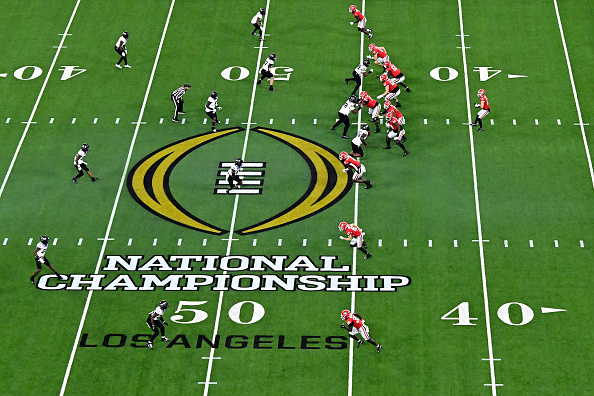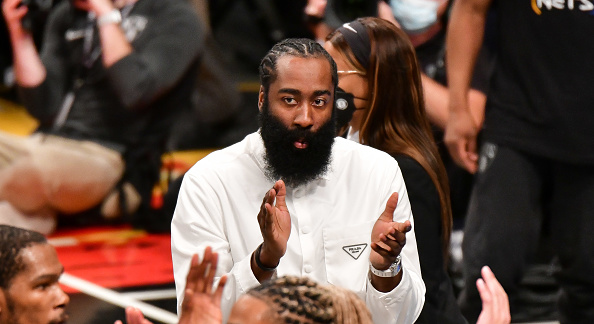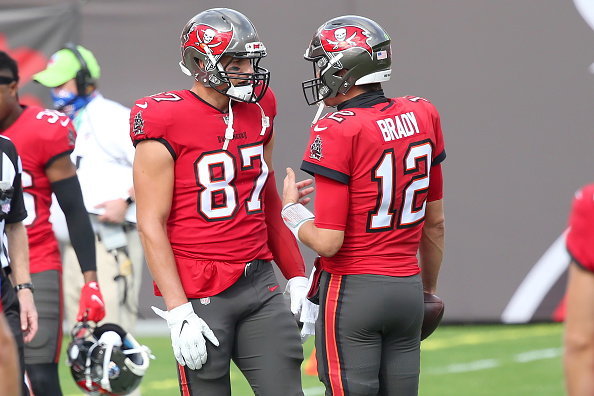- Josh Elias | November 8th, 2019
Chris Andersen, “The Birdman”, is one of the most recognizable role players the NBA has seen.
For obvious reasons.
Covered in colorful tattoos, at times sporting a mohawk, and with a beard rivaling that of James Harden , Andersen was immediately the most unmistakable player on the court for most of his career.
Which is pretty impressive considering he was teammates with LeBron James, Dwyane Wade, Chris Paul, and Carmelo Anthony at various times throughout his journey in the league.
He wasn’t always as distinctive to the eye as he was by the end of his career though.
When he first arrived to the big-time, Chris Andersen was just a normal dude, who happened to be almost seven feet tall and insanely athletic.
He was nearly as clean-shaven as John Stockton, aside from a small tuft of blonde on the bottom of his chin, he had an acceptable hairstyle for a human being, and he had only four tattoos – none of them colorful.

Two of those tattoos were on the inside of each forearm facing each other – the Chinese characters for good and evil.
Some serious foreshadowing there.
How he even got to that point though, where he was checking in for the Nuggets for the first time as an unremarkable-looking player nobody had heard of, is crazy enough.
Chris Andersen grew up in Iola, a small town in Texas.
And when i say small, i mean small.
The population hovers somewhere between 300 and 400, and the Andersen family’s house was the only one for two miles.
They had to “live off the lay of the land”, as they say, something that became markedly harder when Andersen’s father walked out the door soon after they moved and never came back.
He’d left his family to sell his paintings in New York.
Andersen’s mom says she believes he never meant to live in Texas; that he’d only encouraged them to move there to get out of California’s stricter child support laws.
Lovely.
At one point, they’d fallen on such hard times that the only way they could consistently eat was if Chris’ mom, Linda, caught a snake for them to eat.
By middle school age, it was clear that it wasn’t enough.
Chris and his siblings had to live in a group home for three years while Linda and her brother paid off the house, just so they had a place to sleep and food to eat.
By the time he started high school, they were back together though, and everything seemed to be on the right track when Iola High School’s basketball coach convinced him to try out the sport as a freshman.
Three years later, despite playing for the 1180th-biggest high school in Texas, Andersen had somehow played himself into a scholarship offer from Hall of Famer Clyde Drexler, who was coaching the Houston Cougars at the time.
A scholarship Andersen would have to turn down.
He didn’t have the grades to be eligible, and soon he was instead headed to a junior college called Blinn.
At Blinn, Andersen averaged ten points, seven rebounds, and an absolutely absurd 4.7 blocks per game.
He was all set to transfer to Houston for his sophomore season, except for one small issue.
He still couldn’t. He was ruled academically ineligible and had to play another year of JuCo ball.
Or he could just declare for the draft.
Note the usage of the word declare, not apply.
See, he didn’t know that you had to actually fill out the paperwork in order to be eligible for the draft, so he’d managed to lose his college eligibility without even being able to be drafted.
He ended up in Beijing, playing for a team called Jiangsu Nangang.
Now, the Chinese league wasn’t nearly as money-rich as it is today, able to attract NBA flame-outs like Ty Lawson and Shabazz Muhammad.
That wouldn’t happen for about another decade. In 1999 it wasn’t exactly a major basketball attraction.
He only took the offer because he “didn’t really like working.”
For that year, Andersen’s athleticism would dominate China despite very raw skills, and a year later he would be given a chance to play for the Cavaliers’ Summer League team.
He showed enough promise in Summer League to earn a contract in Phoenix, but he was waived before the season started.
That opened up the chance for him to be the first-ever number one pick of the NBA D-League draft – the league that’s now become the G League – the NBA’s official minor league system.
He was also the first player to ever be called up from the D-League to the NBA, when the Nuggets signed him after just three games to fill the roster spot opened up by the release of the equally turbulent player Isaiah Rider.
Three years later, he got his big moment at All-Star Weekend. Everyone there for him, there for the biggest spectacle of the year outside of the playoffs.
Everyone was there to watch Andersen do what he does best.
Dunk a basketball.
So naturally, on the biggest stage of his life, the Birdman repeatedly entirely failed to do the one thing birds do, which is fly.
He had to take fifteen attempts to dunk the ball in order to throw just two down.
But while that was a laughing matter for the public, not much else going on in his life was.
Andersen’s tight-knit relationship with his mom had completely unraveled and they were no longer on speaking terms, his fiancée left him, his house was destroyed in Hurricane Katrina, and his only replacements he had for their places in his life were drinking and hard drugs.
Eleven months after the dunk contest fiasco, the high-flying, mink coat-wearing Andersen was gone from the league, the first player in six years to be banned for “drugs of abuse”.
But he did claw his way back into the league.
After he went to rehab and subsequently passed drug tests every week for two years, the league let him back in and he went back to Denver, the place where he’d been able to mostly stay away from his problems his first go-around.
He earned his spot back almost immediately, proving to be the exact hustle guy on defense Denver needed, and he nearly led the league in blocks as a bench player in each his first two years back, helping Denver reach their only Conference Finals since 1985 in 2009, and becoming some semblance of a fan favorite.
Until May of 2012.
Andersen had dealt with serious injuries to his knees, back, and ankles, and was an afterthought in the world of basketball who hadn’t played a game in nearly two months when he was pulled over by cops on the way to a playoff game against the Lakers.
He was being investigated for child pornography possession.
Hold up. Relax.
He would ultimately be found not guilty when it was revealed years later that the whole situation was fabricated by a woman who was catfishing both Andersen and the 17-year-old girl involved, but no one knew that at the time, so naturally the Nuggets got rid of him as soon as possible.
His NBA career was over again, everyone thought. And when the season started and no one had taken the risk on him, that notion was reinforced.
Until one day that next January, ten days after his lawyer went public about an update to the case, Andersen was given a ten day contract by the Miami Heat.
The Heat were defending champions, but they were also one of the worst rebounding teams in the league, their head coach Erik Spoelstra had been a fan of his game for years, and most importantly, they believed him.
When he stepped on the floor for the first time in a Heat jersey, rocking a red-white-and-blue stars-and-stripes headband before being subbed out just three minutes later, it was already clear he would be a big part of the heart of that team.
When he walked off the court 67 games later, it was with a hat over his headband.
A hat that read “National Basketball Association Champions, 2013”.
Chris Andersen is and always will be, against all odds – odds skewed against him both by the outside world and himself – an NBA champion.

Follow Us on Twitter @thescorecrow
Follow Us on Reddit at u/TheScorecrow
Follow Us on Facebook at The Scorecrow
Follow Us on Instagram at The Scorecrow
Follow Josh Elias on Twitter @thejelias






